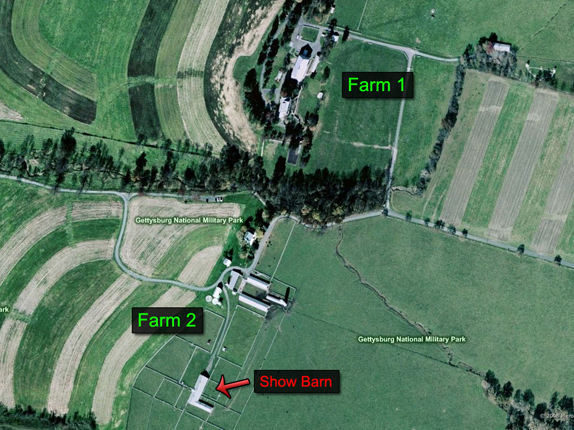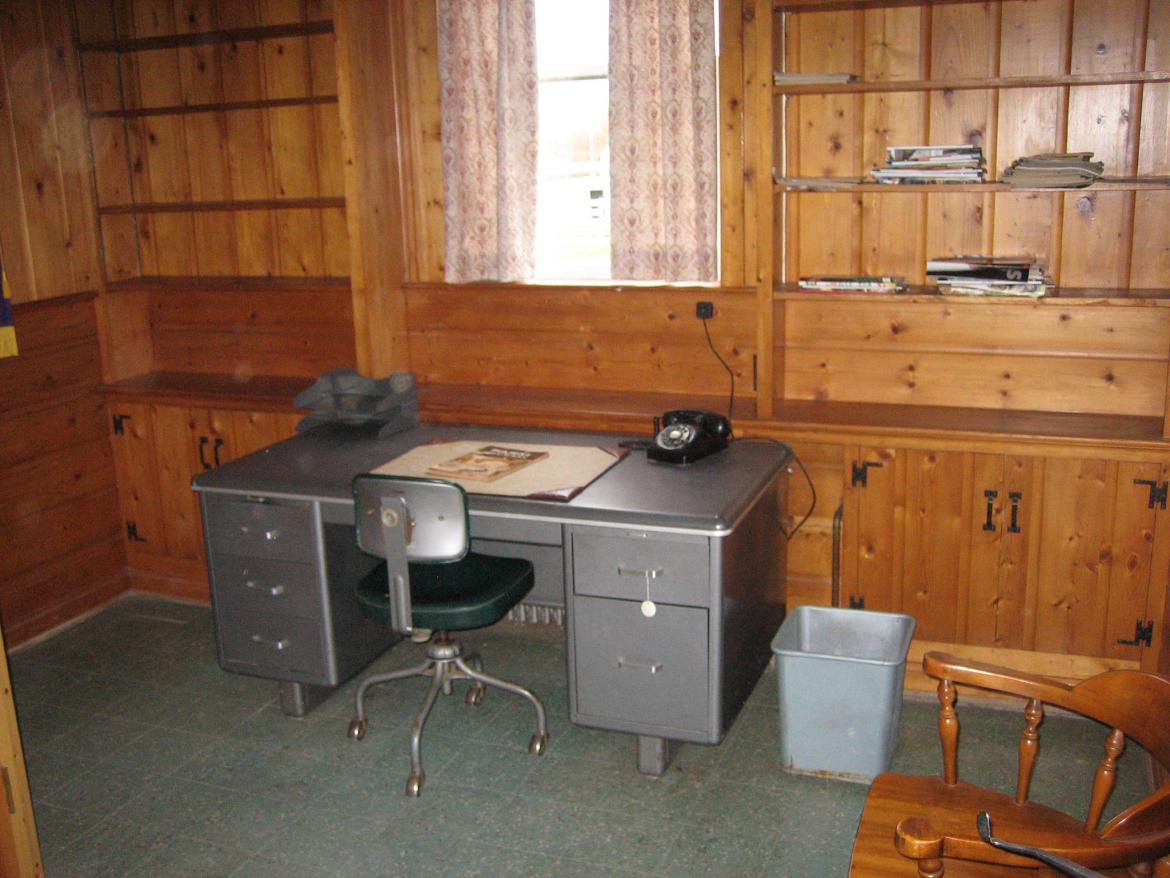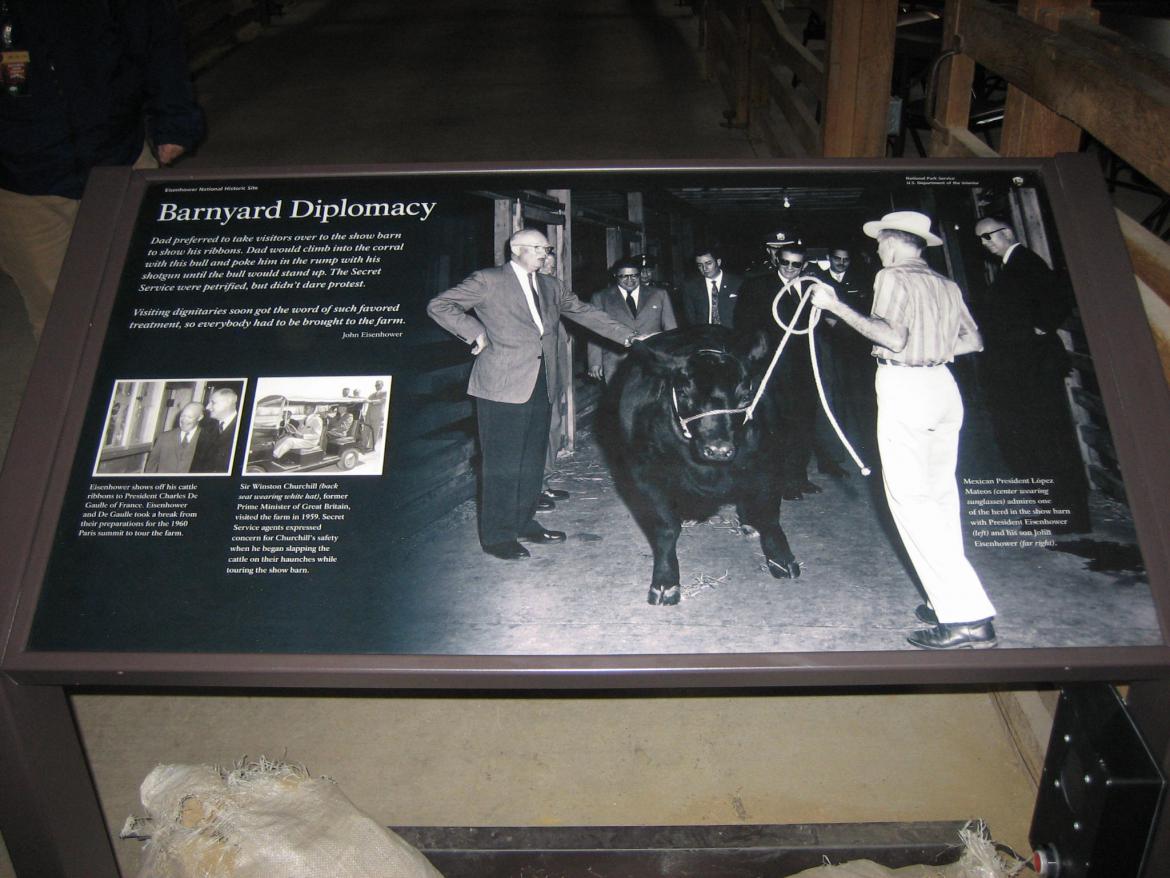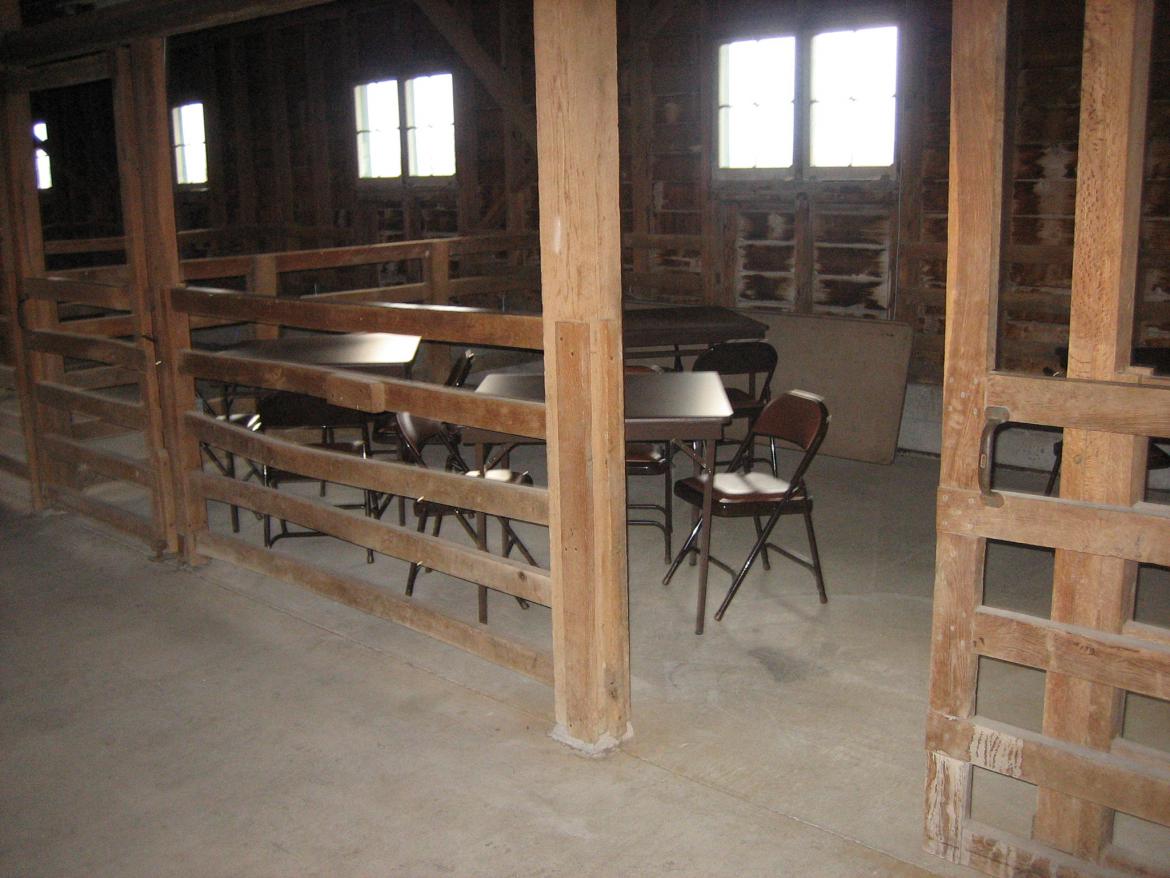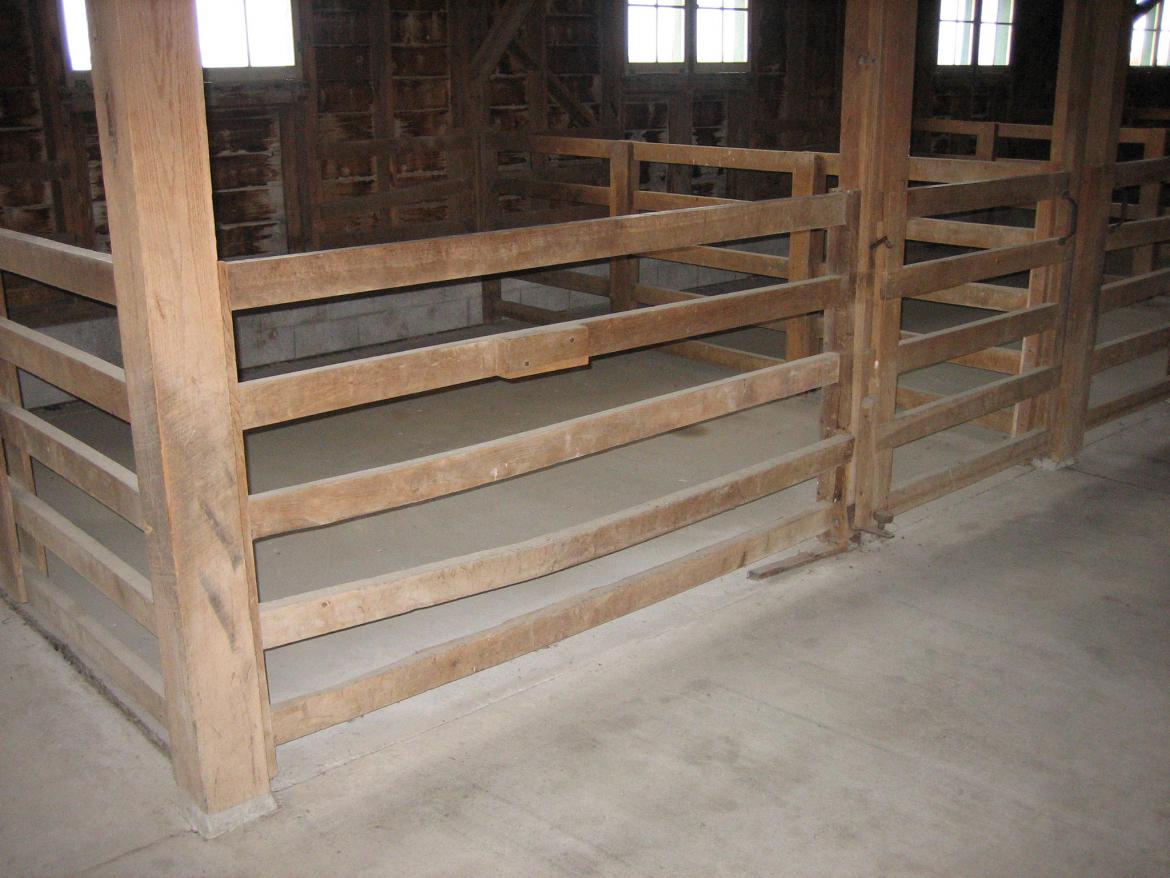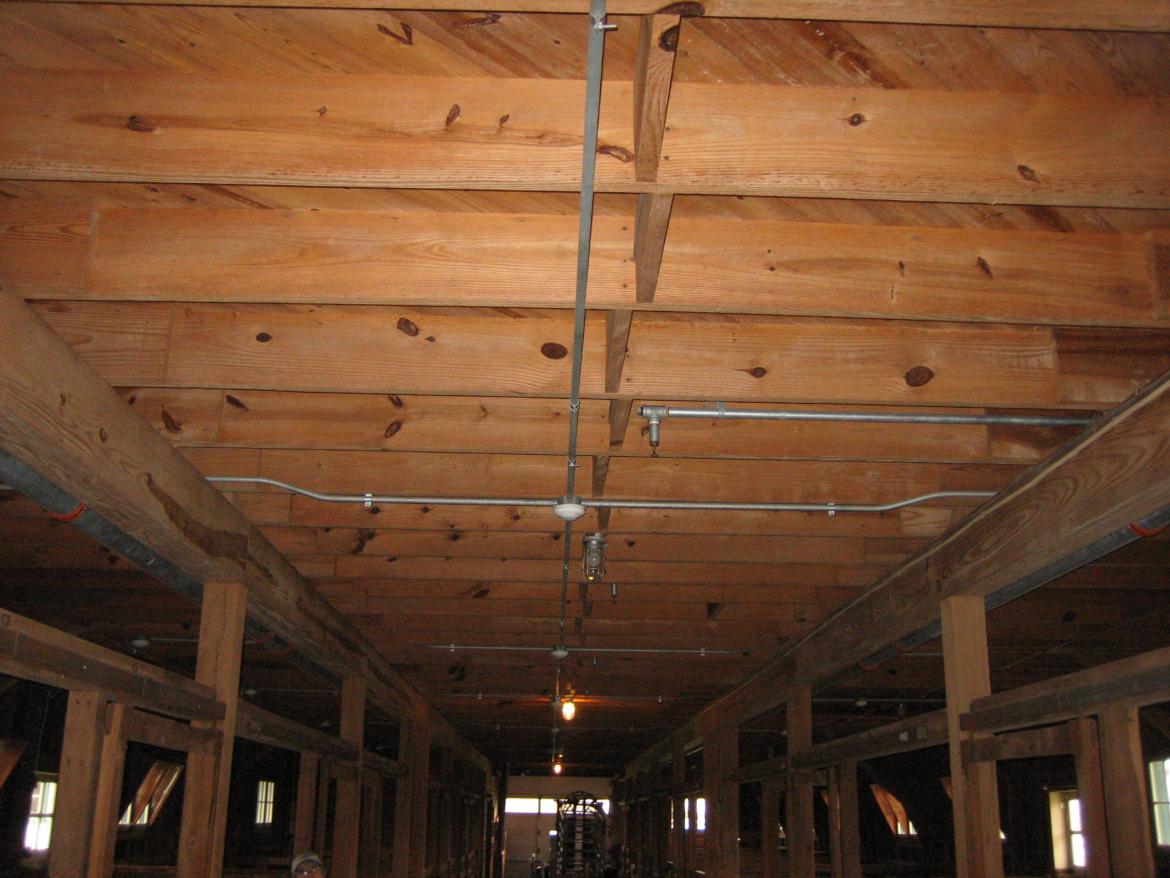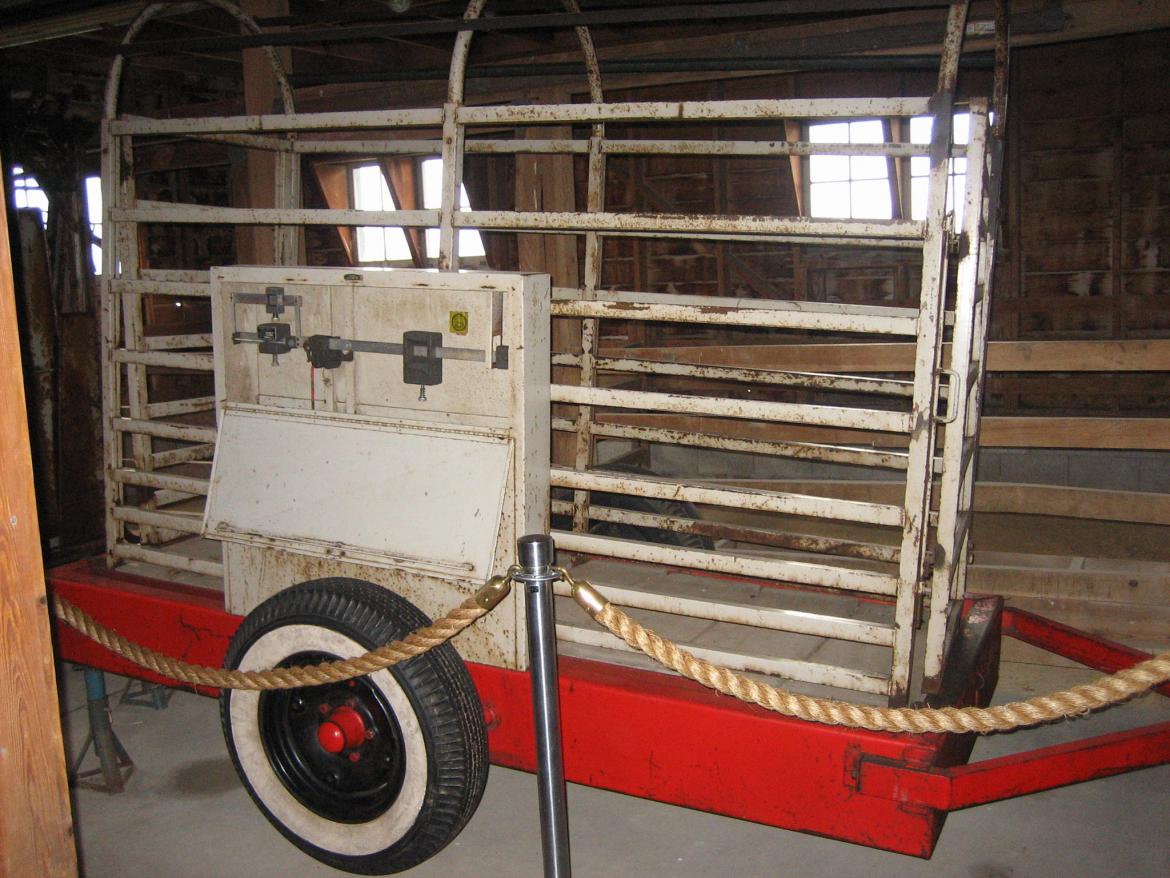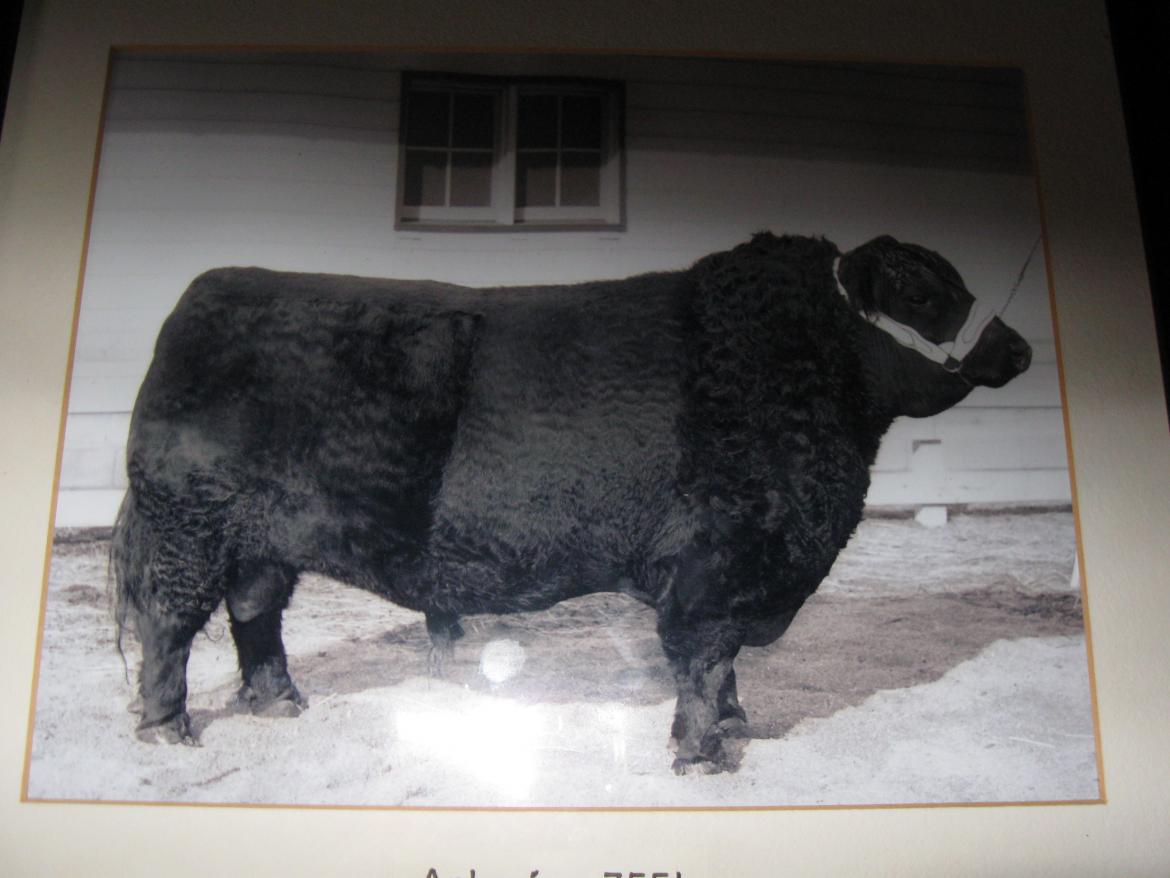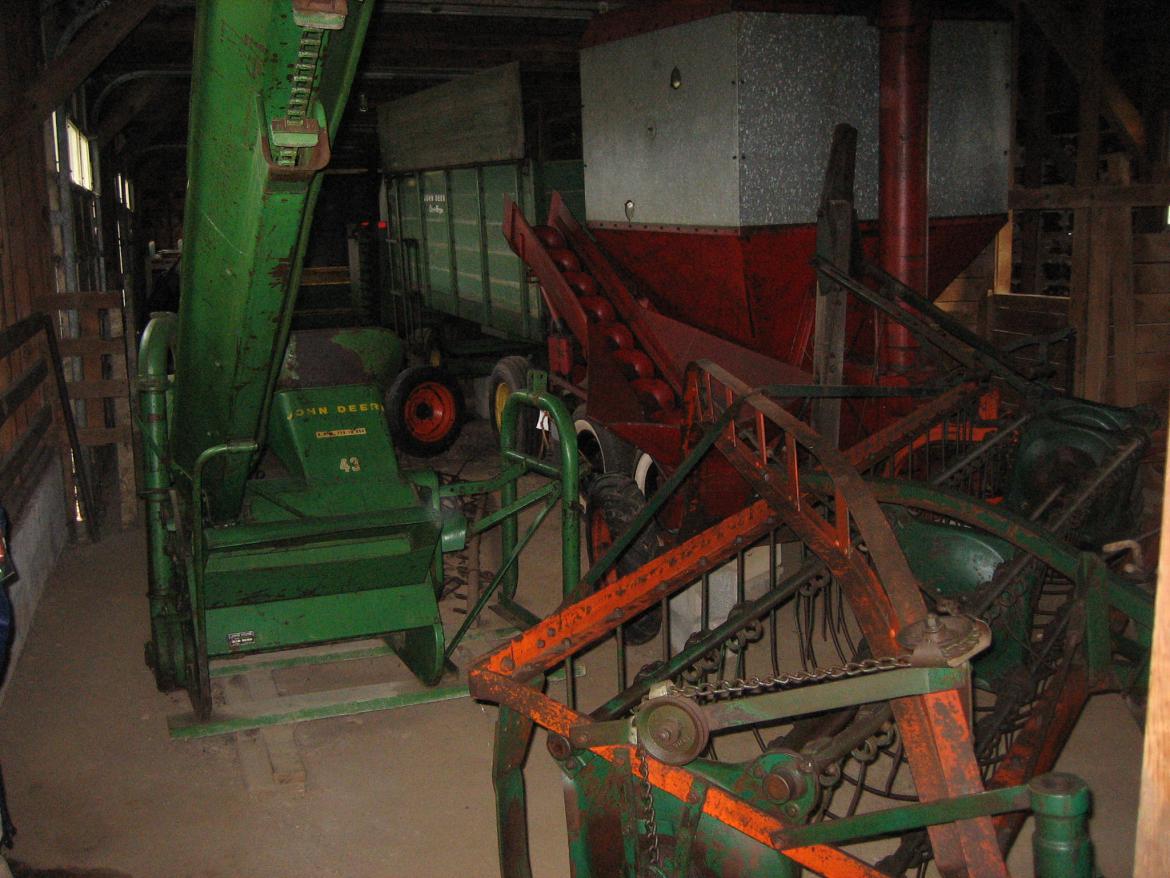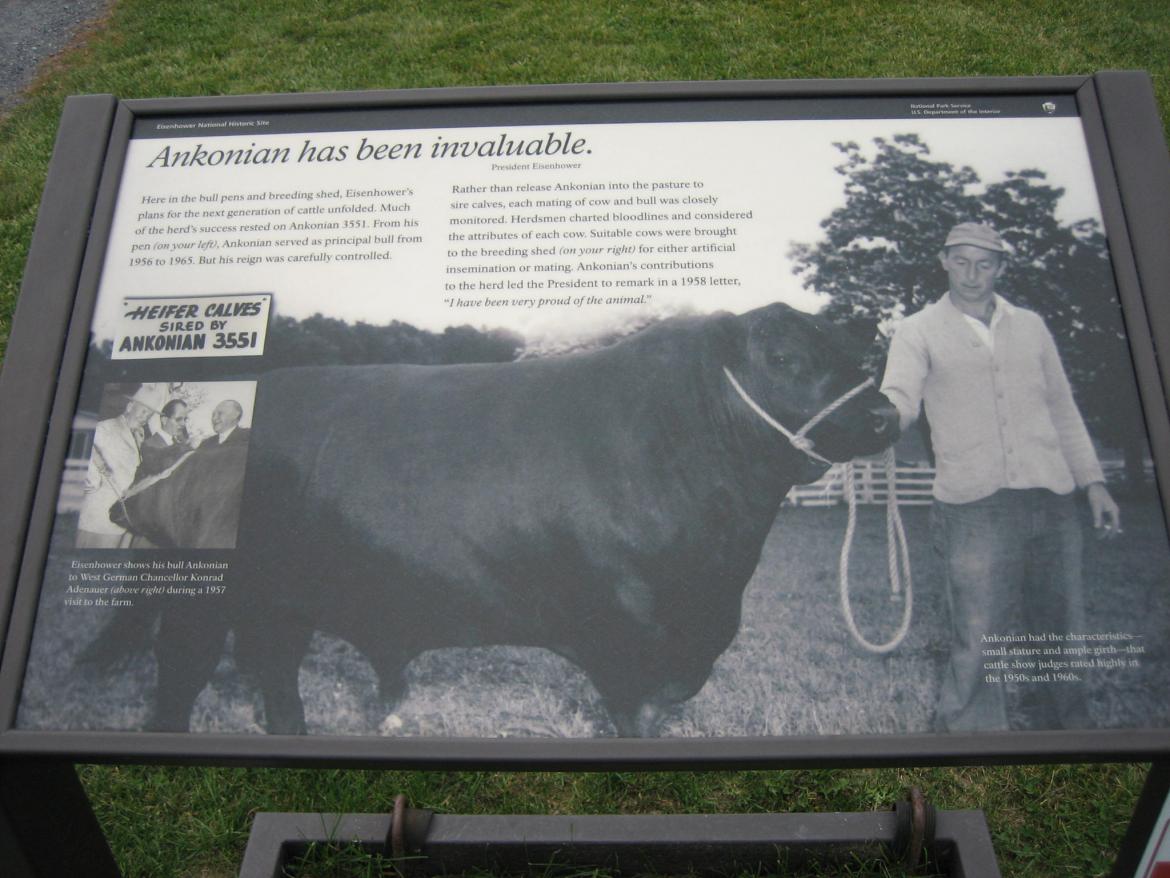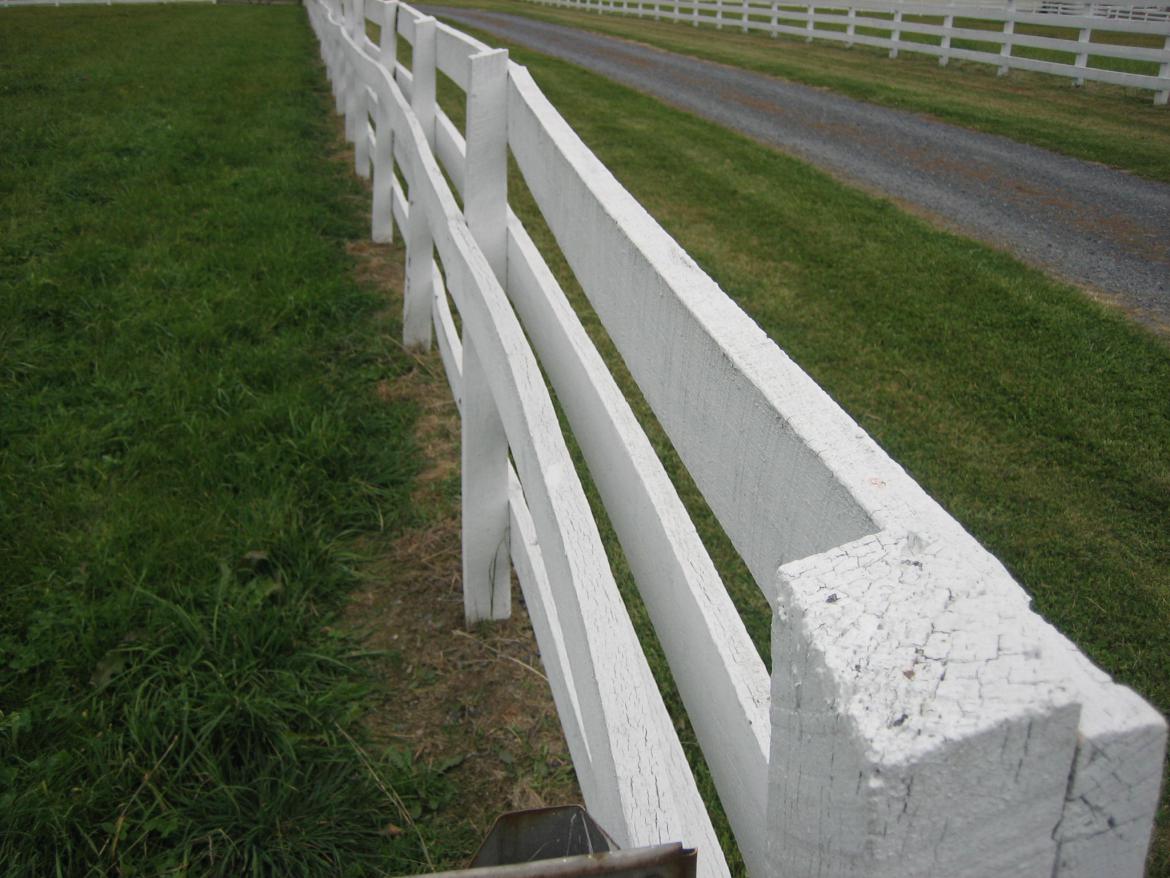The Show Barn at Eisenhower National Historic Site sits on the highest point of Farm #2. It was built in 1956 for $30,000. To give one an idea of how expensive that was, Farm #2, which consisted of 124 acres, a farm house, a chicken house, and a bank barn cost $55,000 when it was purchased in 1954. This view was taken facing southeast at approximately 3:00 PM on Sunday, November 2, 2008.
The Eisenhower National Historic Site consists of four farms. Farm #1 is the Eisenhower Home. Two surrounding farms were purchased by oil executive W. Alton Jones, who was President of the Cities Service Oil Company (now CITGO). Jones was interested in maintaining the Eisenhowers’ protection and privacy. A partnership developed between Jones, Eisenhower, and other individuals to operate the farms.
Farm #2 is just south of the Eisenhower home and was the center of President Eisenhower’s efforts to raise black angus cattle. The hub of Farm # 2 was the Show Barn where the cattle were readied to be displayed at county, state, and national fairs. National Park Service volunteer Donna Lechak took us on a tour of the barn on Sunday.
Here is a map of the relation of Farm #1 and Farm #2 at the Eisenhower National Historic Site. This map was created facing north at approximately 7:00 PM on Monday, November 3, 2008.
Here is a map of the Show Barn area at Farm #2. This map was created facing north at approximately 7:30 PM on Monday, November 3, 2008.
In this video clip, our guide, National Park Service Volunteer Donna Lechak, introduces herself near the north entrance of the Show Barn. This view was taken facing south at approximately 3:00 PM on Sunday, November 2, 2008.
In this video clip, Donna Lechak gives us an introduction to the Show Barn. This view was taken facing southeast at approximately 3:00 PM on Sunday, November 2, 2008.
Near the entrance, Donna shows off some of the ribbons won by the black angus cattle on the farm. The animals won over 300 ribbons and 130 were first place ribbons. This view was taken facing northeast at approximately 3:00 PM on Sunday, November 2, 2008.
When one enters the barn, there there is a wayside exhibit ahead of you, and stalls running down both sides of the barn. This view was taken facing south at approximately 3:00 PM on Sunday, November 2, 2008.
On the right is the bathing room. The show cattle were bathed once a week starting in June until the middle of January so that they could attend their many shows in top condition. Their hair was curled for the shows and was dried with the large hair dryer/blow dryer on the far side of the room. This was a heated room. This view was taken facing northwest at approximately 3:00 PM on Saturday, November 1, 2008.
On the left, or east, when one enters the Show Barn, is the office. While the herd averaged around 100 animals during the Eisenhower’s tenure, the peak year was 1962 when 267 cattle, including 20 Holstein were managed. This view was taken facing northwest at approximately 3:00 PM on Sunday, November 2, 2008.
General Eisenhower wanted his show herd to have a high standard of quality. The farm manager, Bob Hartley recalled that some of Eisenhower’s goals for the herd included the production of “cattle as near to the ideal as possible,” and to have “continuous improvement” of the breed. Eisenhower constantly reminded Hartley of these goals, wanting “to leave the farm better and …the cattle better than when he started.” This view was taken facing southeast at approximately 3:00 PM on Sunday, November 2, 2008.
In this video clip, Donna Lechak pauses near the wayside exhibit to explain how Eisenhower invited important individuals from around the world to tour his operation. This view was taken facing south at approximately 3:00 PM on Sunday, November 2, 2008.
Here is a closeup of the wayside. This view was taken facing south at approximately 3:00 PM on Sunday, November 2, 2008.
There are 18 stalls in the show barn. Most of them have dirt floors. The stalls held two cattle, usually cows and calves. No bulls were allowed inside this building. This view was taken facing northeast at approximately 3:00 PM on Sunday, November 2, 2008.
The show barn has been described as a luxury barn for beef cattle. As Donna stated, its more like a horse barn than a typical cattle barn. This view was taken facing east at approximately 3:00 PM on Sunday, November 2, 2008.
The first couple of stalls on the right (west) have a cement floor that was added in 1968. In these stalls, during what was known as the feeder program from 1967-1969, grain was piled up, sometimes near the top of the railings. Today this is part of an Agricultural Science and Environmental Eduction classroom. Students come here two to three times a year to study the soil, water, wildlife, and forestry. This view was taken facing southwest at approximately 3:00 PM on Sunday, November 2, 2008.
Many cattle would arrive here weighing around 400 pounds. They would begin fattening them up so that after approximately six months, they would leave here weighing around 1000 pounds. This view was taken facing northwest at approximately 3:00 PM on Sunday, November 2, 2008.
After the main barn at Farm #2 accidentally burned in the mid 1990s, sprinkler systems were installed in all of these structures. This view was taken facing south at approximately 3:00 PM on Sunday, November 2, 2008.
At the south end of this section of the show barn is a scale that was capable of weighing animals up to 3000 pounds. This view was taken facing southwest at approximately 3:00 PM on Sunday, November 2, 2008.
The largest and most famous animal was Ankonian 3551. He weighed in at 1700 pounds. For his breeding abilities he was known as “Big Daddy.” This photo is courtesy of the National Park Service.
Also in the rear of the barn is a squeeze chute. This view was taken facing southwest at approximately 3:00 PM on Sunday, November 2, 2008.
The sides of the chute (light colored boards) would press together in an attempt to keep the animal still, and to keep the animal and people handling it from getting hurt. This view was taken facing north at approximately 3:00 PM on Sunday, November 2, 2008.
The sides of the chute state, “We Like Ike.” This view was taken facing southwest at approximately 3:00 PM on Sunday, November 2, 2008.
In this video clip, Donna explains how grain was brought into the barn. To fatten them up, they didn’t eat a lot of hay. They mostly ate grain. This view was taken facing southeast at approximately 3:00 PM on Sunday, November 2, 2008.
At the bottom of the grain chute is the augur that Donna explained during the previous video clip. This view was taken facing north at approximately 3:00 PM on Sunday, November 2, 2008.
We’re following the grain to a room on the other east side of the wall before which Donna was talking in the previous video clip. This view was taken facing southwest at approximately 3:00 PM on Sunday, November 2, 2008.
In this video clip, Donna explains how grain was put into three separate bins. These animals were fed grain three times a day. This view was taken facing northwest, west, and then southwest at approximately 3:00 PM on Sunday, November 2, 2008.
Three bins for the three grains fed to the animals: corn, oats, and barley. The mixture with molasses, linseed pellets, and beet pulp not only put the animals in top condition. It made their coats shiny. This view was taken facing west at approximately 3:00 PM on Sunday, November 2, 2008.
We first entered the Show Barn moving from right to left in this photograph, or from north to south. Now we’re going to make a left turn coming towards the camera position in the shorter wing known as the Nursing Wing. This view was taken facing west at approximately 3:00 PM on Sunday, November 2, 2008.
In the Nursing Wing, the black angus calves were taken away from their mother and given to Holsteins, dairy cows. This view was taken facing east at approximately 3:00 PM on Sunday, November 2, 2008.
In this video clip, Donna explains the Nursing Wing. This view was taken facing east at approximately 3:00 PM on Sunday, November 2, 2008.
In the nursing wing, and other areas throughout Eisenhower National Historic Site, visitors (and you at home) can pull out their cell phones, dial the number, and listen to a history of that spot. Seventeen stops on the new tour also include the guest house, garage, rose gardens, putting green, orchard, and bird coop – dog pens. Story topics and stop numbers are listed on the Eisenhower NHS website at www.nps.gov/eise/planyourvisit/cell-phone-tour.htm. The tour is free but cell phone minutes apply. The cell phone tour is made possible by a generous grant from the Dwight D. Eisenhower Society. This view was taken facing northeast at approximately 3:00 PM on Sunday, November 2, 2008.
Instead of cattle, the Nursing Wing now contains the original farm equipment. This view was taken facing east at approximately 3:00 PM on Sunday, November 2, 2008.
In this video clip, Donna Lechak talks about the farm equipment. This view was taken facing east at approximately 3:00 PM on Sunday, November 2, 2008.
Here is the 1949 Allis Chalmers tractor that Donna mentioned in the previous video. This view was taken facing northeast at approximately 3:00 PM on Sunday, November 2, 2008.
The Nursing Wing also includes this John Deere Planter and fertilizer… This view was taken facing southwest at approximately 3:00 PM on Sunday, November 2, 2008.
… and this John Deere Chuck Wagon. This view was taken facing southeast at approximately 3:00 PM on Sunday, November 2, 2008.
Northwest of the Show Barn is the fenced in area where “Big Daddy,” Ankonian 3551 was kept. This view was taken facing northwest at approximately 3:00 PM on Sunday, November 2, 2008.
Ankonian, as this wayside explains, was penned up so that he could not go into the pasture, and possibly sire cattle with animals he shouldn’t, such as those related to him. This view was taken facing west at approximately 3:00 PM on Sunday, November 2, 2008.
In this video clip, Donna Lechak talks about some of Ankonian’s antics. This view was taken facing east at approximately 3:00 PM on Sunday, November 2, 2008.
Here is how they had to double up some of the boards to keep Ankonian in his pen. This view was taken facing north at approximately 3:00 PM on Sunday, November 2, 2008.
We will return to the Eisenhower National Historic Site for future posts. Here’s a view of Farm # 2 from the area of Farm #4, which is west of Farm #2. This view was taken facing east at approximately 4:30 PM on Monday, November 3, 2008.


